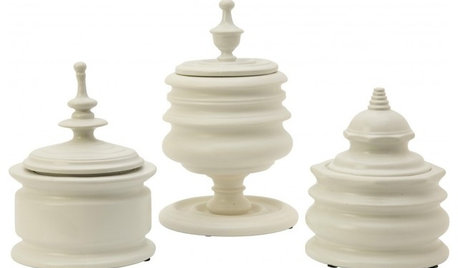I finally have earthworms!
socalgal_gw Zone USDA 10b Sunset 24
9 years ago
Related Stories

MOST POPULARHow to Finally Tackle Your Closet's Critical Mess
It can be tough to part with reminders of your past, but your closet needs space for who you are today
Full Story
HOUSEKEEPINGDishwasher vs. Hand-Washing Debate Finally Solved — Sort Of
Readers in 8 countries weigh in on whether an appliance saves time, water and sanity or if washing by hand is the only saving grace
Full Story
ORGANIZINGGet the Organizing Help You Need (Finally!)
Imagine having your closet whipped into shape by someone else. That’s the power of working with a pro
Full Story
HOME TECHIs the Timing Finally Right for Framed Digital Art?
Several companies are preparing to release digital screens and apps that let you stream artworks and video on your wall
Full Story
CONTRACTOR TIPSBuilding Permits: The Final Inspection
In the last of our 6-part series on the building permit process, we review the final inspection and typical requirements for approval
Full Story
LIFE9 Simple Ways to Savor Summer’s Final Days
Go ahead, ignore the calendar. Stretch out that easygoing, warm-weather feeling with these ideas for indoors and out
Full Story
SHOP HOUZZHouzz Products: Organize That Closet, Finally!
Tame the chaos and create a covetable closet for her, him and the kids with tips from our organizing expert
Full Story
PRODUCT PICKSGuest Picks: Final Touches for Your Tablescape
Give your vignettes a well-traveled, high-end look with shagreen, bone, leather and more
Full Story
BATHROOM DESIGNYour Bath: Faucet Finale
Complement your Sink with Functional and Chic Hardware
Full Story
DECORATING GUIDESThe Dumbest Decorating Decisions I’ve Ever Made
Caution: Do not try these at home
Full StoryMore Discussions







Kimmsr
gardengal48 (PNW Z8/9)
Related Professionals
Clermont Landscape Contractors · Barrington Landscape Contractors · Downey Landscape Contractors · Lehigh Acres Landscape Contractors · Newnan Landscape Contractors · Ponte Vedra Beach Landscape Contractors · Wareham Landscape Contractors · Brookfield Decks, Patios & Outdoor Enclosures · Crystal Lake Decks, Patios & Outdoor Enclosures · Dayton Decks, Patios & Outdoor Enclosures · Hockessin Decks, Patios & Outdoor Enclosures · Palmetto Decks, Patios & Outdoor Enclosures · Rocklin Decks, Patios & Outdoor Enclosures · St. Louis Decks, Patios & Outdoor Enclosures · Stafford Decks, Patios & Outdoor EnclosuresLaurel Zito
socalgal_gw Zone USDA 10b Sunset 24Original Author
nancyjane_gardener
Kimmsr
socalgal_gw Zone USDA 10b Sunset 24Original Author
gardengal48 (PNW Z8/9)
nancyjane_gardener
Kimmsr
gardengal48 (PNW Z8/9)
nancyjane_gardener
gardengal48 (PNW Z8/9)
nil13
Kimmsr